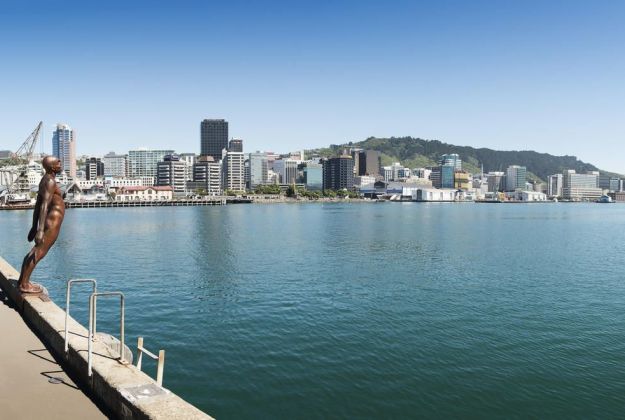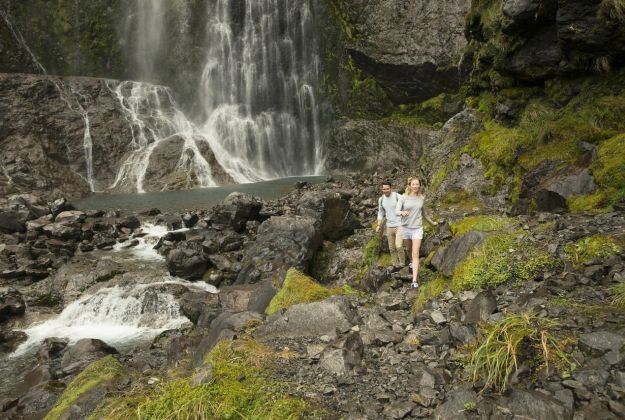New Zealand Weather & Seasons by Month
The New Zealand climate is dominated by two main geographical features, the mountains, and the sea.
New Zealand has a largely temperate climate. Most of the country lies close to the coast which means mild temperatures, moderate rainfall, and abundant sunshine.
New Zealand lies in the Southern Hemisphere so the average temperature decreases as you travel south. The far north of the country has an average temperature of about 15°C, while the deep south has a cooler 9°C average.
January and February are the warmest months of the year and July is the coldest. However, the weather can change unexpectedly as cold fronts or tropical cyclones quickly blow in. Because of this, you should be prepared for sudden changes in weather and temperature if you’re going hiking or doing other outdoor activities.
Most places in New Zealand receive over 2000 hours of sunshine a year, with the sunniest areas - Bay of Plenty, Hawke's Bay and Nelson/Marlborough - receiving over 2350 hours. As New Zealand observes daylight saving, during summer months daylight can last up until 9.00pm.
New Zealand experiences relatively little air pollution compared to many other countries which make the UV rays in our sunlight very strong during the summer months. In order to avoid sunburn, visitors should wear sunscreen, sunglasses, and hats when they are in direct summer sunlight, especially in the heat of the day (11am to 4pm).
New Zealand’s average rainfall is high - between 640mm and 1500mm - and evenly spread throughout the year. As well as producing areas of stunning native forest, this high rainfall makes New Zealand an ideal place for farming and horticulture.



Summer
From December to February, the New Zealand summer months bring high temperatures and sunshine. Days are long and sunny, nights are mild. Summer is an excellent time for walking in the bush and a variety of other outdoor activities. New Zealand’s many gorgeous beaches are ideal for swimming, sunbathing, surfing, boating, and water sports during summer.
Autumn (Fall)
From March to May the temperatures are a little cooler but the weather can be excellent and it is possible to swim in some places until April. While New Zealand’s native flora is evergreen, there are many introduced deciduous trees. Colorful changing leaves make autumn a scenic delight, especially in regions such as Central Otago and Hawke’s Bay.
Winter
June to August are winter months in New Zealand and bring colder weather to much of the country and more rain to most areas in the North Island. Mountain ranges in both islands become snow-covered, providing beautiful vistas and excellent skiing. While the South Island has cooler winter temperatures, some areas of the island experience little rainfall in winter, so this is an excellent time to visit glaciers, mountains, and other areas of scenic beauty.
Spring
From September to November, New Zealand’s spring weather can range from cold and frosty to warm and hot. Buds, blossoms, and other new growth burst forth throughout the country and newborn lambs frolic in the fields. If you’re into white water rafting, this is the time when melting spring snow makes river water levels excitingly high!

Getting to New Zealand
Getting here was as much of an adventure as the experience itself

Getting Around
Travel by bus, train, flights, self-drive. Check out different travel options & trip recommendations

Visas & Arrivals
Information on Visitor or Tourist Visa & arrival information to help you understand requirements to visit New Zealand when on holiday & whether you need a visa


.jpg)




What our customers have to say
OUAT organised a great trip on the Hollyford Track. The lodges were wonderful with the most decisions food. The guides really knowledgeable and friendly....
Susie and Alice Hoddell, UK
Once Upon A Trip in New Zealand were fantastic from beginning to end. I highly recommend this company. Romain was incredibly helpful in the months leading...
Jonathan Reynolds, USA
Once Upon a Trip have been an amazing company to deal with. We are particularly thankful for the clear, friendly and prompt communication from Romain who...
Wayne & Gabrielle, Australia
